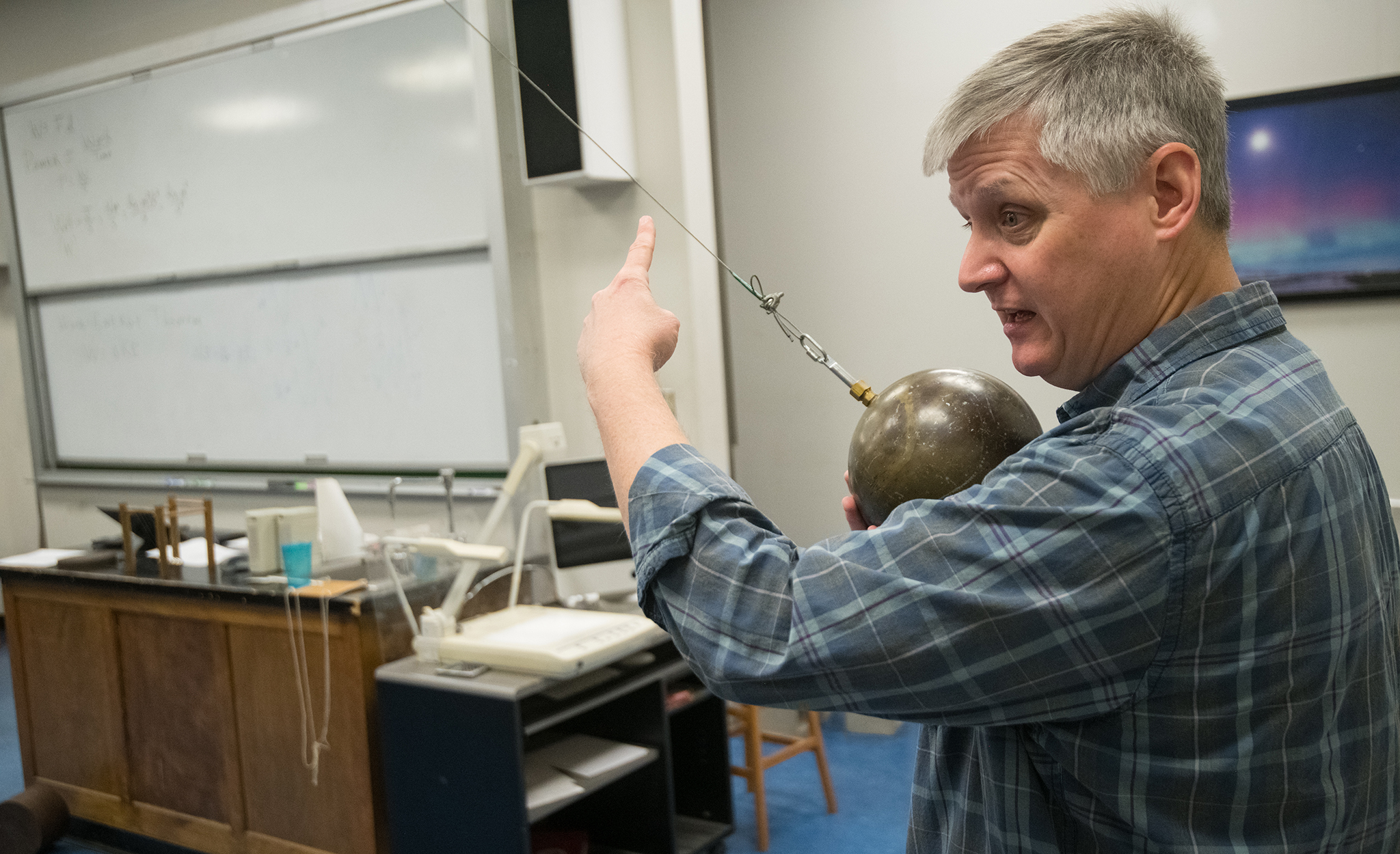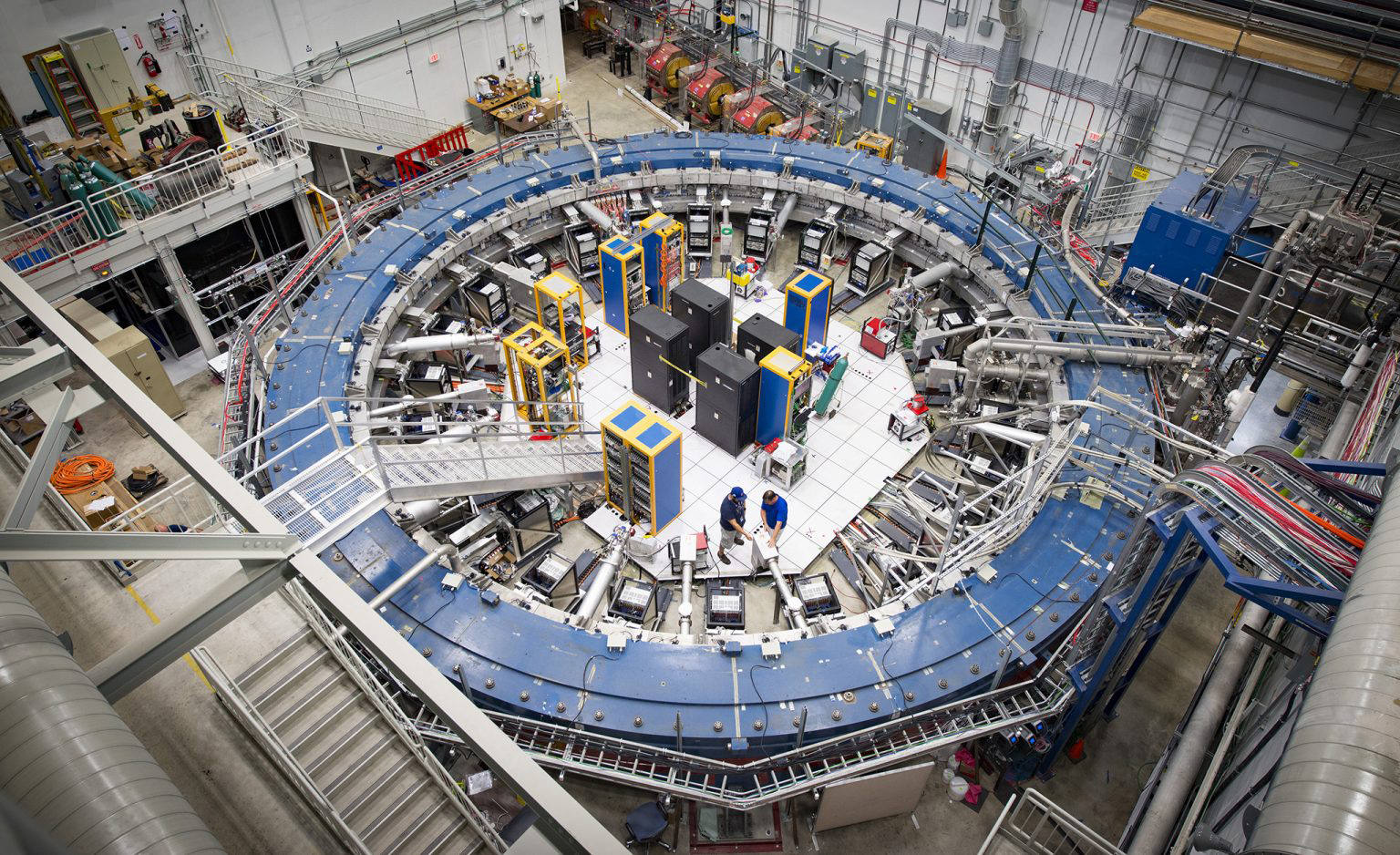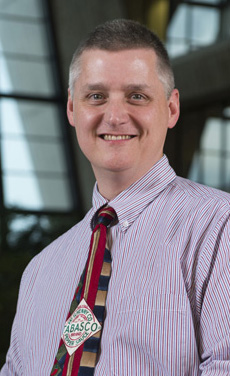UM physicists partner with Department of Energy to test precision of the Standard Model

Breese Quinn, professor of physics and director of the university’s Multimessenger Astrophysics Center, demonstrates laws of physics to students in his classroom. For the last decade, Quinn and fellow UM researchers have been working with an international group at Fermilab, where a new measurement of the movement of subatomic particles could change the way physicists understand the universe. Photo by Kevin Bain/Ole Miss Digital Imaging Services
AUGUST 11, 2023 BY CLARA TURNAGE
The work of University of Mississippi physics researchers at the Fermi National Accelerator Laboratory could point to undiscovered subatomic particles or forces that could change the current understanding of how the universe works.
Since its inception in 2008, the Department of Energy’s Fermi National Accelerator Laboratory’s Muon g-2 experiment, has attempted to seek new physics beyond the Standard Model, the theory by which scientists describe and predict the actions of the universe’s basic building blocks.
Announced Thursday (Aug. 10), the Muon g-2 experiment found that some of the observations differ from the predictions of the Standard Model to such a degree that the differences point to the existence of previously unknown particles affecting the rotation of muons, subatomic particles roughly 200 times heavier than an electron. Scientists from 33 institutions across seven countries contributed to the experiment.
Breese Quinn, UM professor of physics and director of the UM Center for Multimessenger Astrophysics, has been working on Muon g-2 since 2013. He said the announcement could be one of the most important measurements in particle physics in more than 20 years.

The core component of the Muon g-2 experiment at the Fermi National Accelerator Laboratory is a 50-foot superconducting electromagnet. UM physicist Breese Quinn is among the collaborators on the project that has made the most precise measurement ever of the movement of subatomic particles called muons. The magnet traveled through northeast Mississippi in 2013 on a 3,200-mile journey from New York to the underground laboratory in the suburbs of Chicago. Photo courtesy Fermilab
“Our g-2 experiment is probably the most important particle physics experiment in the world right now,” Quinn said. “This is the best evidence we’ve had for decades that we have something new in the field of particle physics.”
In 2001, the Department of Energy’s Brookhaven National Laboratory found significant hints that there are some elements that the Standard Model cannot correctly predict. The Fermilab Muon g-2 experiment sought to improve on those results.
Understanding and accurately predicting forces and subatomic particles that the model does not cover could help scientists better understand the universe, Quinn said.
Though the work is not yet finished – Quinn estimated the final data results would be released in 2025 – these early implications show that many unknown factors may still remain that could influence particle physics.
Two UM graduate students, Baisakhi Mitra and Byungchul Yu, and one postdoctoral research associate, On Kim, served as run coordinators and data analysts for the experiment at the Fermilab facility in Batavia, Illinois. Run coordinators manage the daily operations of the experiment and ensure the safety of all of those involved. It is rare for graduate students to be charged with such an important role, Quinn said.
“Our young scientists have done incredible work and have gotten us to a level of understanding on this data that we’ve never had before,” he said. “We understand our data to about 100 parts per billion; to be able to understand our data to that extent is astounding. This is the highest precision measurement that Fermilab has ever achieved.”

Breese Quinn
Mitra, a fourth-year graduate student from Kolkata, India, who is pursuing a doctorate in physics, said working on the experiment gave her hands-on experience in the field while allowing her to manage complex equipment such as the 50-foot superconducting electromagnet used to accelerate muons orbiting around the storage ring to nearly the speed of light.
“To see things like that happen, it was really interesting,” Mitra said. “For a couple of seconds, I couldn’t believe what I was seeing. I was really happy to see the triumph of science. It wasn’t a single person’s contribution; it was the collaborative effort of so many people.”
The project is an example of an international collaboration between scientists, engineers and physicists to unveil the universe’s mysteries, said Kim, a postdoctoral research associate from Seoul, South Korea.
“There are nearly 200 collaborators around the world working tirelessly to complete this effort,” Kim said. “Our experiment is a bit special in the sense that we are not only conducting particle physics experiments, but the scientists and physicists and engineers in different fields are all gathered here to measure this one thing – the magnetic moment of the muon.”
Yu, a fifth-year graduate student from Suwon, South Korea, said working on a large project like this one has been his dream since childhood.
“I studied physics with curiosity about the origin of the universe,” Yu said. “Our Muon g-2 experiment at Fermilab not only helps to identify the right direction for current physics but also paves the way for a new direction that we haven’t seen yet.”